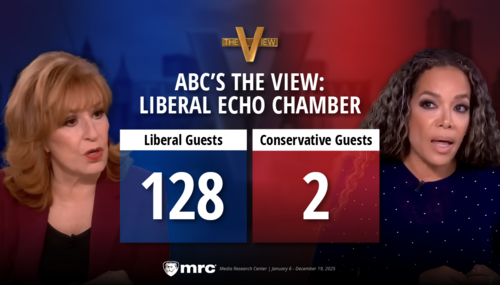The New York Times versus state spending cuts. Reporter Sabrina Tavernise went to the downtrodden town of Gallipollis, Ohio, and collected a grab bag of sympathetic liberal anecdotes about government workers threatened by a bill that would restrict public-sector unions, for Wednesday’s “Ohio Town Sees Public Job As Only Route To Middle Class.”
Tavernise focused solely on the plight of low-income workers, including unionized government workers, while failing to mention the state's $8 billion deficit (a number included only in an Associated Press sidebar story, "Governor's Budget Seeks To Limit Union Influence.")
Jodi and Ralph Taylor are public workers whose jobs as a janitor and a sewer manager cover life’s basics. They have moved out of a trailer into a house, do not have to rely on food stamps and sometimes even splurge for the spicy wing specials at the Courtside Bar and Grill.
While that might not seem like much, jobs like theirs, with benefits and higher-than-minimum wages, are considered plum in this depressed corner of southern Ohio. Decades of industrial decline have eroded private-sector jobs here, leaving a thin crust of low-paying service work that makes public-sector jobs look great in comparison.
Now, as Ohio’s legislature moves toward final approval of a bill that would chip away at public-sector unions, those workers say they see it as the opening bell in a race to the bottom. At stake, they say, is what little they have that makes them middle class.
Tavernise described Gallipolis as “a faded town on the Ohio River, one whose fortunes fell with the decline in industries like steel in bigger cities along the river.” She certainly painted it bleakly:
Today, storefronts are mostly dark. About one in three people live in poverty. Billboards advertise oxygen tanks and motorized wheelchairs. Old photographs in a local diner look like an exhibit from a town obituary. The region has some of the highest rates of prescription drug abuse in the state, with more people dying from overdoses than car crashes, according to Ed Hughes, executive director of the Counseling Center in Portsmouth, about 55 miles west of here.
Tavernise forwarded the liberal claim that wages have stagnated over the last few decades, without any countervailing conservative context. She failed to note that standards of living have certainly improved for the average American since 1970 (home computers and big-screen televisions, to name two), and that workers’ benefits have risen faster than inflation. Many economists also see flaws in how inflation is measured, which make the income figures look worse than they are. Tavernise then quoted a left-wing professor as an income expert.
Wages at the bottom of the labor market have stagnated since 1970, with inflation gobbling up gains made over the years. The federal minimum wage buys a lot less today; it represented just 38 percent of the average hourly wage for private, nonsupervisory workers in 2010, down from 47 percent in 1970, according to the federal Bureau of Labor Statistics.
“The wage story is incredibly bleak for everyone from the middle on down,” said Jacob S. Hacker, a political science professor at Yale University and co-author of “Winner-Take-All Politics: How Washington Made the Rich Richer -- And Turned Its Back on the Middle Class.” “We’ve gotten dramatically richer as a society, but if you’re a wage earner below the median, you’ve seen your wages stagnate or shrink.”
She concluded with a sympathetic anecdote:
[Jodi] ]Taylor was washing dishes when the State Senate passed the labor bill this month. She sat down and cried when she heard the news. It does away with seniority and leaves out any job protection for workers with longer service, putting public workers -- most of whom are not eligible for Social Security -- at risk of losing their retirement income.
“I’m scared,” Ms. Taylor said. “You just start to think, what about this, what about that? This is going to hurt a lot of people.”
On February 23 Tavernise, writing with A.G. Sulzberger called the Tea Party movement “far-right”: “Taking a cost-cutting position against unions is part of the mantra for far-right groups like the Tea Party, and not necessarily unpopular.”




